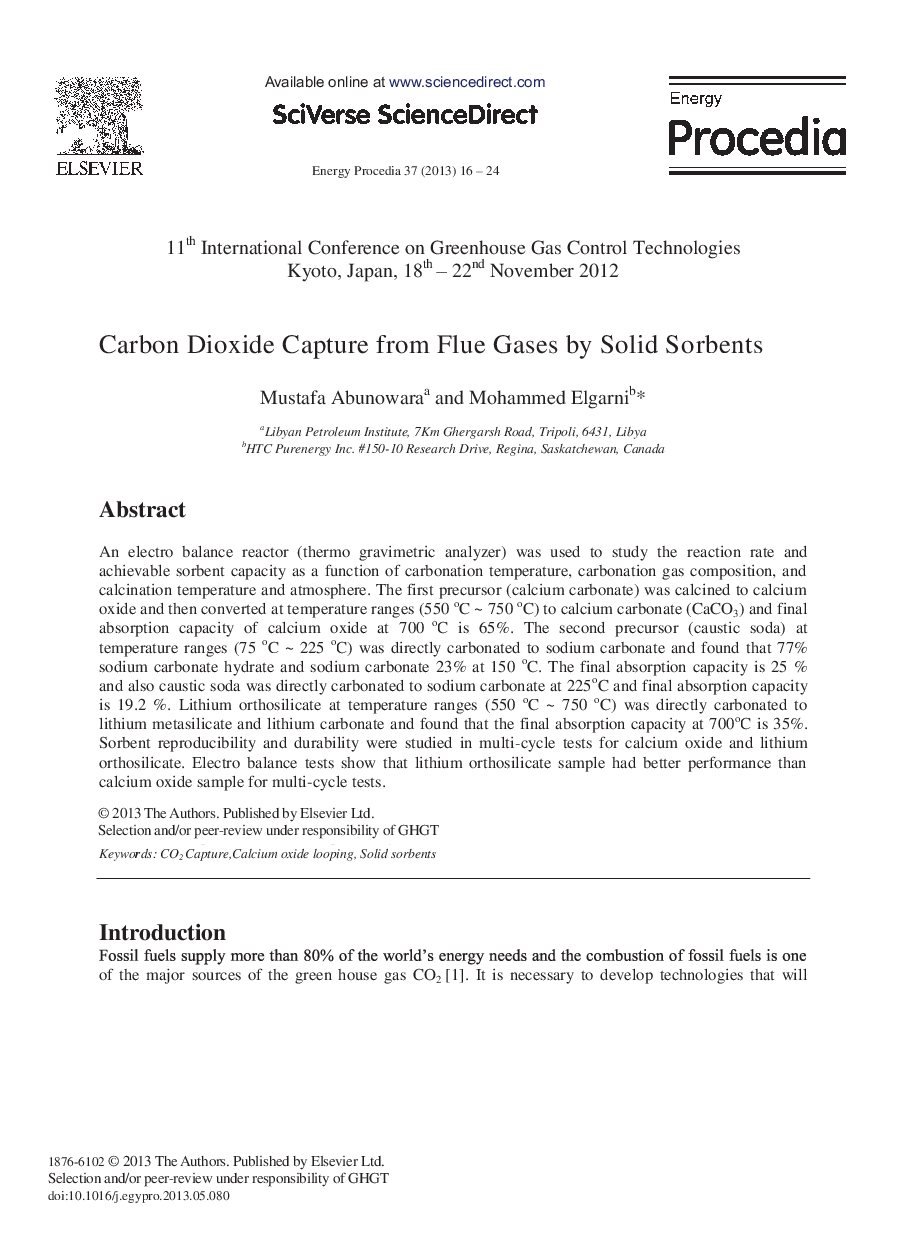| کد مقاله | کد نشریه | سال انتشار | مقاله انگلیسی | نسخه تمام متن |
|---|---|---|---|---|
| 1512793 | 1511198 | 2013 | 9 صفحه PDF | دانلود رایگان |

An electro balance reactor (thermo gravimetric analyzer) was used to study the reaction rate and achievable sorbent capacity as a function of carbonation temperature, carbonation gas composition, and calcination temperature and atmosphere. The first precursor (calcium carbonate) was calcined to calcium oxide and then converted at temperature ranges (550 °C ∼ 750 °C) to calcium carbonate (CaCO3) and final absorption capacity of calcium oxide at 700 °C is 65%. The second precursor (caustic soda) at temperature ranges (75 °C ∼ 225 °C) was directly carbonated to sodium carbonate and found that 77% sodium carbonate hydrate and sodium carbonate 23% at 150 °C. The final absorption capacity is 25% and also caustic soda was directly carbonated to sodium carbonate at 225°C and final absorption capacity is 19.2%. Lithium orthosilicate at temperature ranges (550 °C ∼ 750 °C) was directly carbonated to lithium metasilicate and lithium carbonate and found that the final absorption capacity at 700°C is 35%. Sorbent reproducibility and durability were studied in multi-cycle tests for calcium oxide and lithium orthosilicate. Electro balance tests show that lithium orthosilicate sample had better performance than calcium oxide sample for multi-cycle tests.
Journal: Energy Procedia - Volume 37, 2013, Pages 16-24